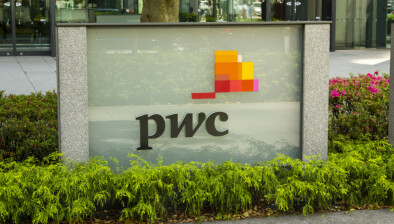PwC expects global GDP growth to increase by 4.5% in market exchange rates in 2022

Barret Kupelian
Global GDP growth is expected to increase by around 4.5% in market exchange rates in 2022 as global economies continue to grow, and are likely to remain resilient in the face of the Omicron variant, according to base case projections in PwC’s latest Global Economy Watch.
PwC has said that the US, EU and China will remain the world’s largest economies for the foreseeable future, although 2022 is expected to be the first year the Chinese economy overtakes that of the EU.
Meanwhile, India’s GDP is expected to become $3tn which is a growing indication of how the country is using its demographic might to transform its economy.
Barret Kupelian, senior economist at PwC, said that even though the short-term outcome is highly uncertain due to the potential economic impact of Omicron, in the firm’s base case scenario it expects the larger economies to stay on their recovery path for the rest of the year with the global economy growing at around 4.5% in market exchange rates, above its long-term average rate.
He added that it is likely that some advanced economies will slow down in the first quarter of this year due to higher inflation rates, although growth is likely to pick up later.
Mr Kupelian urged that this is highly dependent and fast-changing—a return to the severe health impacts and lockdowns of 2020 would inevitably have a significant impact on global output, perhaps by as much as 0.5 percentage points compared to PwC’s base case growth projection.
The “high pressure” nature of the economic recovery — where monetary and fiscal policy has focused on supporting advanced economies through the pandemic — is expected to continue to sustain a jobs boom, with nearly 10 million jobs created across the G7 in 2022.
Hannah Audino, economist at PwC, said: “This is the highest volume of jobs created for the G7 since the mid-1980s, and a ‘hot’ labour market is expected to increase the bargaining power of workers. Yet this does not necessarily mean that wages will continue the fast growth recorded last year.
“In particular, we think 2022 will be the year of the ‘flexible employer’ as employers focus on providing even greater flexibility — building on existing trends such as shorter working weeks or hybrid employment models — to attract workers, as well as other non-financial benefits.”
The global supply chain issues which have created economic disruption throughout 2021 are expected to ease in 2022, which will reduce inflationary pressures in the second half of the year and create extra capacity for central banks to respond to further disruption caused by the pandemic.
Mr Kupelian concluded: “While supply chain disruption will ease, the longer-term impact will be a greater focus on ‘strategic autonomy’ where policy focuses on domestic production for key industries.
“The shift from the ‘just in time’ to the ‘just in case’ economy is a trend we expect to see intensify in most advanced economies this year and to continue for the remainder of the decade.”







